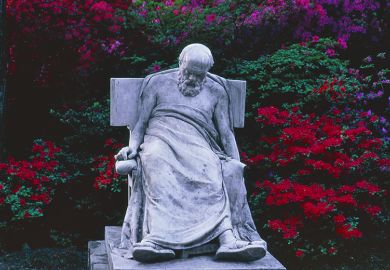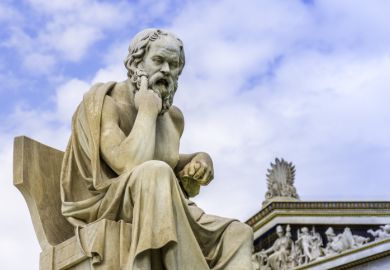A long a boundary hundreds of miles long, the dense Amazon forest comes to an abrupt end and gives way to broad savanna. The dividing line is as clear as the Great Wall of China, but it owes nothing to human agency. And there is no fundamental physical difference between the zone where trees have taken root and the area where the grass grows: the weather and subsoil are the same. So what explains this great system of botanical separate development?
The question is not merely theoretical.
Everyone agrees the border is slowly shifting, though botanists have tended to hold that the forest is advancing on the savanna, while geologists think the savanna must be encroaching on the forest. Either way,the process could threaten the flora and fauna of Amazonia and bring economic ruin to its peoples: clearly a suitable case for organised scientific research.
For two weeks in October 1991, two Brazilian women, a botanist and a geomorphologist, teamed up with three men - two soil scientists or "pedologists" from France and a local technician - to investigate a few hectares on the forest-savanna margin at Boa Vista. The botanist had worked there before, segmenting the site with Cartesian coordinates and nailing metal number plates to the trees. This time she collected leaves and filed them in folders according to grid references, while the pedologists criss-crossed the plot, trailing measuring threads paid out by an instrument the women mockingly called a "pedofil". The geomorphologist kept an exact log as the technician dug metre-deep holes and the pedologists took soil samples, rubbing them between thumb and forefinger to judge their consistency and checking their colour against a Munsell chart before inserting them in a "pedocomparator", a kind of printer's case that allows samples from different locations to be scrutinised side by side.
At the hotel afterwards, the soil scientists began to concede that the forest could indeed be colonising the savanna: it was possible that earthworms were transmuting sandy surface soil into clay, contrary to the principles of classical pedology. Their expedition had produced both a result and a new research project and they could celebrate a great scientific success.
Of course, the five naturalists did not record the human story of the expedition in their report. That was left to a mysterious sixth character, who shadowed them wherever they went. He tried to be helpful (his height made him useful as a self-erecting alignment pole), but he was also intent on a research project of his own, directed not at trees, grass, soil and worms, but at botanists, pedologists, geomorphologists and technicians. In short, he was an exponent of "science studies", the would-be science of the sciences.
Bruno Latour was a founder of the discipline back in the 1970s and is now its chief spokesperson in France, where he works, and in Britain and the United States, where he has become a favourite hate figure in the "science wars". To the charge that science studies spreads a monstrous incubus called "relativism" which is devouring the very fabric of reason and western civilisation, Latour responds with shock and desolation, like a devout and blameless choirboy accused of farting in church. His studies of myth and ritual among scientists are motivated by love and reverence, he says, and he is astonished when his wide-eyed innocence is mistaken for cheeky defiance.
Pandora's Hope is Latour's systematic defence of science studies, starting with impressions of his sojourn with five naturalists in Amazonia.He savours the irony that they cannot be satisfied with what is immediately present under their feet in Boa Vista until their samples have been shipped off and analysed in Paris or São Paulo. He likes the way their folders of leaves and samples of earth have been linked to their maps and charts by means of the lengths of string and fixed and mobile poles of the science of surveying. "One science always hides another," he comments. And he notes that the credibility of the investigation depended not on samples, specimens, plans, poles and notebooks alone, but on the evidential routes linking them to each other, which must be kept open to a constant traffic of cross-referrals. It all goes to show how vain it would be to build a philosophical fence between data and theories, between the sunlit natural objects in Boa Vista and the confections of words, graphs and symbols through which they now circulate among researchers throughout the world. The rusting tags on the trees at the site are one part of the apparatus and the pigeon-holes housing botanical samples in São Paulo are another. "This piece of furniture is a theory," Latour says, and the same applies to the poor pedofil and the pedocomparator back in Paris: it is only through such hybrids that "the world of things may become a sign".
His language may be too showy and humorous for some tastes, but his observations of five naturalists on the verge of a forest are overwhelmingly persuasive, and without a hint of supercilious hostility to the cause of science. Latour is proud to have been cited as co-contributor to their research report, and they must be equally pleased to figure in his.
Some of the same brilliance is displayed in Latour's historical chapters on Pasteur and French science; but it fades when he tries to mix it with philosophy and politics on a grand scale. Fearing, perhaps, that we might not swallow his arguments if he spelt them out logically, he prefers diagrams, especially a diamond with boxes at each corner labelled "God", "Nature", "Mind" and "Society", portraying what Latour calls the "modernist settlement".
The modernist settlement has dominated western thought ever since antiquity, according to Latour; and it is a sheer deception. His diagram shows, he thinks, that it makes Nature into a juggernaut before which our poor little Mind must weakly cower, while Society is turned into a dangerous moron, the satanic opposite of God. On Latour's Sellars-and-Yeatman version of intellectual history, modernism is a Bad Thing, invented by Socrates and fortified by Descartes, but it will shortly be overthrown and replaced by a "nonmodern" carnival in which "the very essence of the Body Politic" will be unchained and the true realities of science and democratic politics will flourish at last.
This consummation is to be brought about by science studies, which, with the help of Latour's diagrams, will demonstrate that the reality known to the sciences is not a monolithic object but a dialogical process, in which investigators and their objects - botanists and their plants, for instance,or microbiologists and their microbes - combine in an ecstasy of mutual parasitism that will eventually kill off the whole modernist dichotomy between humanity and nature.
The post-humanist and post-materialist future that beckons us will, according to Latour, be owned by a "collective formed by ever vaster numbers of humans and non-
humans". For the essence of scientific truth is the "factish", a living unity that modernism likes to split in two with its great metaphysical chopper, so as to enslave Society and trap it between the rock of impersonal "facts" and the hard place of personal "fetishes". When science studies has completed its work, however, natural facts and human fetishes will be reunited in endless cosmic factishism.
If Latour treated the established procedures of philosophy with even a fraction of the respect he shows for those of the sciences, we would have been spared his delirious diagrams about "granting ontology back to nonhuman entities", but we would also have missed his excellent paradoxes. Science studies never wished to "politicise" the sciences, he says; it only wants to free them of the political burdens laid on them by reactionary science warriors. And it is interested in nothing but robust reality, having no links whatsoever with "constructivism" in the theory of knowledge or the whimsicalities of "social construction".
Excuse me? Everyone knows, surely, that science studies holds that scientific facts are cooked up by science, not imposed on it by unbiddable acts of God or nature. Indeed, the idea of construction has long been accepted by scientists. Physicists throughout the 20th century have prided themselves on constructing "mathematical models" - a point that was generalised by Karl Popper
in the 1940s when he said that "facts do not exist as facts" until they have been "singled out" and "pinned down" by a theory.
The commonplace idea of science as the construction of models caught fire in the 1970s. It became - as Ian Hacking notes in his intelligent miscellany, The Social Construction of What? - a rallying cry for the radical optimists who relished the thought that social forms are transient and resented any attempt to freeze them for eternity on the authority of something called "science". Hacking has surfed through dozens of "social constructionist" arguments, trying to fish a few nourishing truths from oceans of "sloppy thinking". It is boringly obvious, as he says, that concepts and theories are "socially constructed", and equally obvious that sticks and stones are not. But he is not a boring thinker, so he prefers to explore the territory that lies between the banalities. He concentrates on phenomena such as "child abuse" or "women refugees", wondering in what sense they existed before they were conceptualised as such and noting the "looping effects" through which objective realities can be moulded by intellectual artefacts and hence by transient political and conceptual interests or even fads.
But does Hacking think the sciences themselves are contingent artefacts? He loves the "fuzzy dragon of science studies", he says, but he likes "the old-time philosophy" as well, so he suggests we split the difference by admitting that the questions posed by the sciences may be arbitrary, while insisting that the answers they get are not. Comfiness makes him uncomfortable, however, and he knows that "what is confused is sometimes more useful than what has been clarified". The answer, in the end, lies in the toil.
Jonathan Ree is lecturer in philosophy, Middlesex University.
Pandora's Hope: An Essay on the Reality of Science Studies
Author - Bruno Latour
ISBN - 0 674 65335 1 and 0 674 65336 X
Publisher - Harvard University Press
Price - £.95 and £12.50
Pages - 324
Register to continue
Why register?
- Registration is free and only takes a moment
- Once registered, you can read 3 articles a month
- Sign up for our newsletter
Subscribe
Or subscribe for unlimited access to:
- Unlimited access to news, views, insights & reviews
- Digital editions
- Digital access to THE’s university and college rankings analysis
Already registered or a current subscriber?



